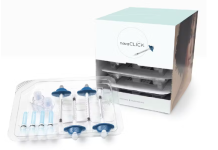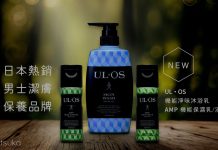There’s no denying that fuller lips have become somewhat of a cultural obsession in the last few years. And whether you’re looking for ways to temporarily plump your pout at home or you’re curious about in-office procedures, we’re here to provide some insight (and hopefully clarity) on your options, so you can make the best and safest choice for yourself.
To start, it’s important to know that our lips—like the rest of our faces—lose volume as we age. A decrease in volume can cause your lips to lose some definition, form fine lines around the perimeter of your mouth and look less plump overall.
The two most popular treatments people get to address this loss in volume are lip flips and lip fillers, which we’ll explain in further detail below.
First of all, what’s the difference between a lip flip and lip filler?
“Lip flip is a term that has been coined when using neuromodulators such as Botox and Dysport to inject into the lip in order to make it look fuller,” explains Dr. Mariana Vergara, a cosmetic dermatologist in Beverly Hills. “As the neuromodulator is injected into the orbicularis muscle of the top lip, the muscle will then become relaxed, causing the top lip to flip outward. This flip gives the illusion that the lip is fuller than it actually is,” she adds.
Lip fillers, on the other hand, are performed by administering injections of a hyaluronic acid dermal filler (i.e., Juvederm, Vollure or Restylane) to actually increase the volume of the lips to enhance its appearance, Vergara tells us.
How do you decide between the two?
“If the patient wants to achieve a more voluptuous lip with more volume overall, I’d recommend the addition of dermal fillers to the area. However, if someone wants to keep their original volume but is interested in adding just a bit of projection and a slight enhancement in a more subtle way, then the lip flip is a great option,” shares Vergara.
“Both treatments help to enhance the lips, but the mechanism, duration and products used are different,” says Nicci Levy, the founder and CEO of Alchemy 43, a full-service aesthetic treatment bar. Generally, the appointment itself only takes 20 to 30 minutes and results last between a few months (in the case of a lip flip) to a full year (in the case of filler). “Results vary based on individual differences, such as how fast you metabolize the product,” adds Levy.
But if you’re on the fence between the two, Levy suggests doing both filler and a lip flip in combination for the most balanced results.
Vergara agrees, adding that: “Sometimes I perform a combination of both treatments for better results. It all depends on the look the patient is trying to achieve. Good and clear communication is essential in understanding exactly what each person’s desired results are. This will determine what treatment options and fillers will be most effective.”
With fillers, you can better customize the results based on what products are used. “For fuller, plumper lips, I usually use a thicker filler. If the patient just wants more hydration and subtle enhancement, I will use a softer, more blended hyaluronic acid product to give natural looking results,” says Vergara.
How much does each treatment cost?
Lip flips are typically cheaper than lip fillers. “[A lip flip] usually takes about four to eight units of Botox (or another neuromodulator) per session. On the other hand, dermal fillers tend to be more costly on the whole,” shares Vergara.
Pricing is determined by the number of vials required for treatment, the injector’s credentials and your geographical location, and can run you anywhere between a couple hundred dollars to $2,000 a pop.
Are there any precautions to take or things to note before I make an appointment?
“I always explain to my patients that with fillers you can expect mild swelling, bruising, pain and tenderness at the injection site. This can last a couple of days or a couple of weeks. It varies for each individual,” says Vergara. “The lip flip treatment, on the other hand, is a faster procedure, is less painful, and has little-to-no downtime. That said, it usually takes one to two weeks to see full results, depending on the neuromodulator that was used.”
And if you decide to move forward with either treatment, Levy recommends “avoiding alcohol, blood thinners and fish oil 24 to 48 hours before your appointment” as they can increase the likelihood of post-injection bruising and “to not massage or manipulate the areas that were injected post-treatment.” Tempting as it might be to poke and prod your pout, it’s best to keep your hands off until the injections have settled into place.






